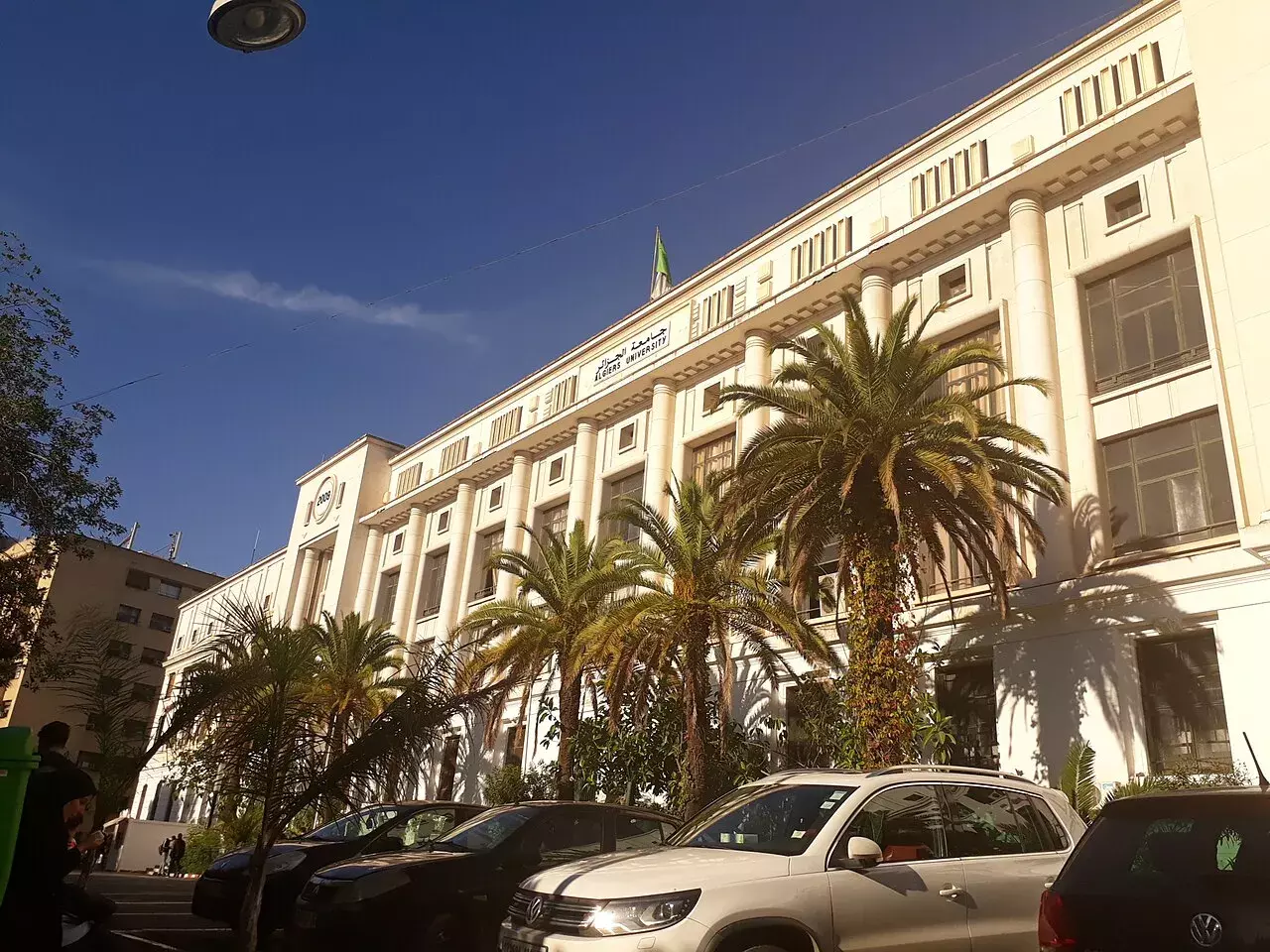
University of Algiers
Overall Rating: ⭐⭐⭐⭐☆ (4/5)
Rating Breakdown:
Historical Significance – ⭐⭐⭐⭐⭐ (5/5)
✔ Cultural Impact – ⭐⭐⭐⭐☆ (4/5)
✔ Atmosphere & Maintenance – ⭐⭐⭐⭐☆ (4/5)
✔ Accessibility – ⭐⭐⭐⭐☆ (4/5)
✔ Tourist-Friendly – ⭐⭐⭐☆☆ (3/5)
Weather
- Mediterranean climate – warm, dry summers and mild, rainy winters.
Tags
- Historical University, Cultural Institution, Academic Landmark
Timings
- Open during academic hours (typically 8:00 AM – 5:00 PM, Sunday to Thursday)
Time Required
- 1 – 2 hours for a casual visit or campus tour
Entry Fee
- No entry fee for walking around the campus grounds (guided access may be required for specific buildings)
Things to See & Do
- Explore Historic Buildings – Admire colonial-era and modernist architecture across the different campuses.
- Visit the Library – One of Algeria’s oldest academic libraries with rare and historic collections.
- Cultural Exhibits – Periodic exhibitions, lectures, and cultural events hosted on campus.
- Photography – Capture scenic views of the main university buildings, especially at University of Algiers 1.
Best Time to Visit
- Late morning or early afternoon on weekdays (Sunday to Thursday) for the most accessible experience.
- Avoid exam periods and university holidays for smoother access.
Nearest Parking Spots
- Limited street parking nearby; parking within the university is restricted to staff and students.
- Best accessed by public transport or taxi.
Overview
Historic Legacy – Founded in 1909 during French colonial rule, the University of Algiers is the oldest and most prestigious institution of higher learning in Algeria.
Educational Excellence – Known for its contributions to law, literature, philosophy, and political science.
Cultural Pillar – Played a significant role in shaping Algeria’s intellectual and political elite, especially during the independence movement.
Three Branches – Since 2009, the original university has been split into:
- University of Algiers 1: Focused on law, medicine, and hard sciences.
- University of Algiers 2: Specializing in humanities, Islamic studies, and Arabic literature.
- University of Algiers 3: Covers economics, political science, information and sports sciences.
Architectural Highlights – The original colonial structures mix with modern buildings, offering a glimpse into Algeria’s evolving educational architecture.
- Main Library (University of Algiers 1) – Home to thousands of historical and academic texts, it remains a center for serious study and research.
- Amphitheaters and Lecture Halls – Some date back over a century and feature classic university architecture.
- Benyoucef Benkhedda Campus – A major site named after a key figure in Algeria’s independence history.
- Student Squares and Gardens – Open green areas where students gather, particularly lively during campus events.
- Founded in 1909, the university began with faculties of law, medicine, letters, and sciences.
- It became a symbol of intellectual resistance during the Algerian War of Independence, with many students participating in protests.
- Post-independence, the university expanded rapidly and became a key institution in rebuilding and shaping the modern Algerian academic system.
- In 2009, it was reorganized into three distinct institutions to better manage its growing size and complexity.
- The original campus features colonial-era French architecture: arched windows, red-brick façades, and wide staircases.
- Newer structures reflect modernist and functionalist styles, especially at the newer University 2 and 3 campuses.
- Each university branch has developed its own academic and architectural identity.
- Visit on Weekdays – Avoid Fridays and national holidays when the university is closed or less active.
- Photography – You may take photos of the campus exteriors, but interior access may require permission.
- Respect Academic Spaces – Refrain from entering classrooms or libraries during lectures unless guided.
- Combine with Nearby Attractions – Located in central Algiers, the university is close to the Kasbah, Martyrs' Memorial, and downtown cafés.
- Location – Campuses are spread across Algiers; the main one is in central Algiers near the Government Palace.
- By Taxi – Taxis and app-based ride services are reliable and widely available.
- By Public Transport – Reachable via bus, metro (Line 1), and tram systems depending on the specific campus.
- Parking Availability – Limited; public transit or drop-off is recommended for casual visits.